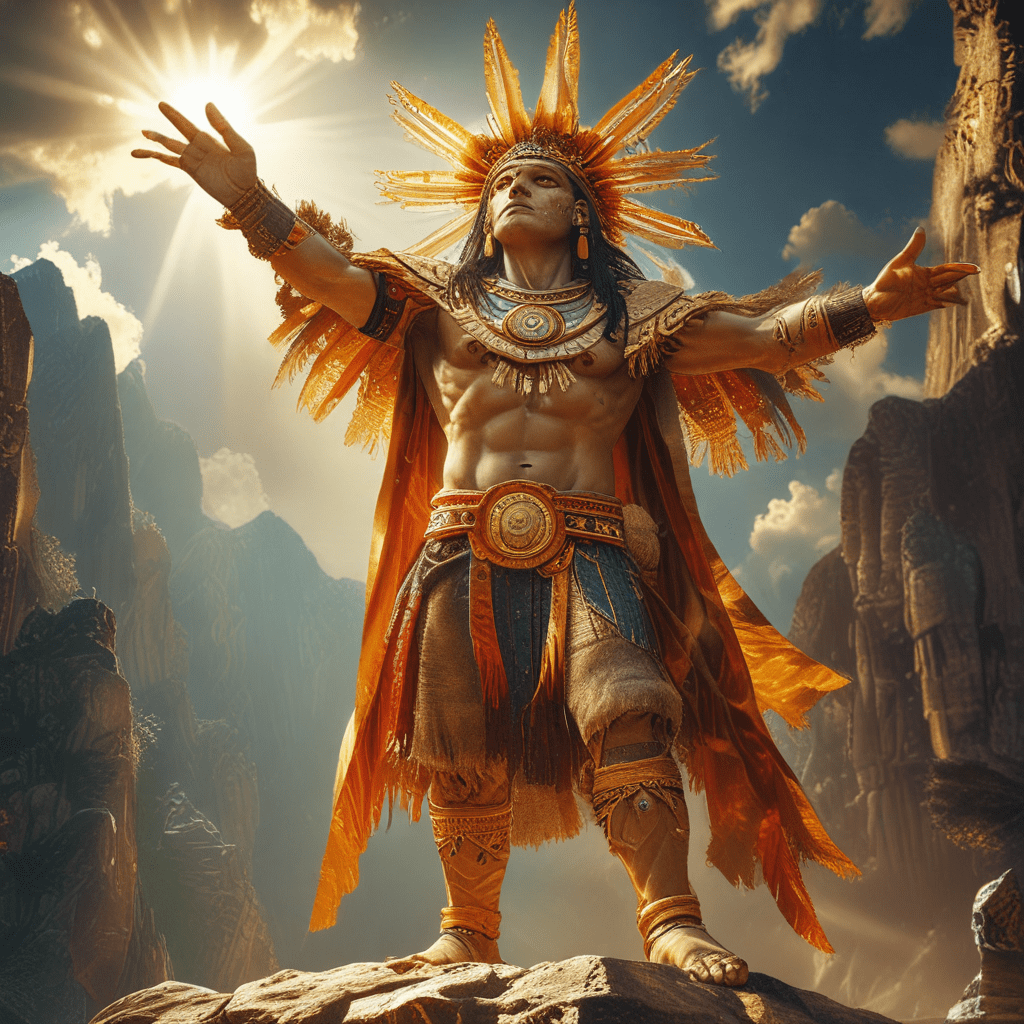The Floods of Folklore: How Oral Traditions Shape Our Understanding
1. Introduction: The Significance of Flood Myths in Global Cultures
Flood myths are a common thread woven through the tapestry of human culture, appearing across diverse civilizations and geographic regions. From the Sumerians to the Native Americans, stories of great deluges have captured the imagination and conveyed profound truths about the human experience. These narratives often serve as a reflection of the societies that tell them, revealing their values, fears, and hopes.
The role of oral traditions in preserving these stories cannot be overstated. Passed down through generations, oral storytelling has allowed these myths to endure, evolving while maintaining their core messages. This article explores the significance of flood myths, their historical contexts, and their impact on contemporary society.
2. Historical Context: Ancient Civilizations and Their Flood Narratives
Ancient civilizations often crafted flood narratives in response to their geographical realities. For example:
- Sumerian Culture: The Epic of Gilgamesh recounts a great flood sent by gods to cleanse the earth, paralleling themes found in other cultures.
- Egyptian Culture: In ancient Egypt, the flood of the Nile was viewed as a life-giving force, symbolizing rebirth and fertility.
- Indian Culture: The Matsya Purana depicts a great flood where the god Vishnu saves humanity, echoing the narratives of divine intervention.
These narratives were shaped significantly by the environments in which these civilizations thrived, illustrating the interplay between nature and culture.
3. The Archetype of the Great Flood: Common Themes and Patterns
Many flood myths share common elements that reflect human concerns and experiences. Key themes include:
- Divine Retribution: Floods often symbolize punishment for humanity’s transgressions.
- Salvation: The stories frequently feature a chosen individual or group saved from the flood, symbolizing hope and survival.
- Rebirth: The aftermath of the flood represents a new beginning, a fresh start for humanity.
While these themes resonate across cultures, the specifics of each narrative highlight the unique beliefs and values of the societies that produced them.
4. The Role of Oral Tradition in Storytelling
Oral traditions are vital in shaping cultural identity and memory. They offer a means of preserving history, morals, and lessons for future generations. Techniques used in oral storytelling include:
- Repetition: Key phrases and motifs are repeated to aid memory and emphasize important points.
- Imagery: Vivid descriptions help listeners visualize the events, making the story more engaging.
- Call-and-Response: Engaging the audience during storytelling strengthens community bonds and enhances participation.
These methods ensure that flood narratives remain dynamic and relevant, adapting to the needs of each generation while retaining their core messages.
5. Flood Myths as Metaphors for Human Experience
Beyond their literal meanings, flood myths serve as powerful metaphors for the human experience. They can symbolize:
- Change: Floods often signify transformations in life, both positive and negative.
- Loss: The destruction caused by floods can represent personal or societal loss.
- Resilience: The survival of individuals or communities highlights human strength and adaptability.
These interpretations can resonate deeply with people, allowing them to connect their personal experiences with broader human themes.
6. Case Study: The Epic of Gilgamesh and the Story of Noah
The flood narratives found in the Epic of Gilgamesh and the biblical story of Noah are two of the most well-known examples. In the Epic of Gilgamesh, the hero Utnapishtim is forewarned by the god Ea about an impending flood meant to wipe out humanity. He builds a large boat to save himself, his family, and various animals. This narrative emphasizes themes of divine retribution and the quest for immortality.
In contrast, Noah’s story, found in the Book of Genesis, also involves divine warning and salvation through the construction of an ark. Noah’s obedience leads to the preservation of life on earth, illustrating themes of faith and righteousness. Both stories reflect the values and beliefs of their respective cultures, highlighting humanity’s relationship with the divine.
7. Modern Adaptations and Interpretations of Flood Myths
Flood myths continue to inspire contemporary literature and media, often reinterpreted to reflect modern themes. For example:
- Literature: Novels may use flood narratives to explore environmental issues or personal struggles.
- Film: Movies often depict flood scenarios as metaphors for societal collapse or renewal.
- Art: Visual arts may incorporate flood imagery to comment on climate change and its impacts.
The relevance of these ancient tales remains evident, particularly in the context of climate change and natural disasters, as societies grapple with increasingly frequent and severe flooding.
8. The Intersection of Science and Folklore: Understanding Natural Disasters
The relationship between scientific explanations of floods and their folkloric representations is complex. While science provides empirical data about flood causes and effects, folklore offers cultural narratives that shape public perception. For instance:
- Scientific Understanding: Floods can be explained through meteorology, geology, and environmental science.
- Folkloric Interpretations: Communities may interpret floods as acts of divine will or as omens of change.
Understanding both perspectives can enrich our comprehension of natural disasters and their societal impacts.
9. Preserving Flood Myths in a Digital Age
In the digital age, the transmission of oral traditions faces both challenges and opportunities. Technology can enhance the preservation of flood myths through:
- Digital Archiving: Stories can be recorded and stored for future generations.
- Online Platforms: Social media and websites provide spaces for sharing and discussing these narratives.
- Documentary Films: Visual storytelling can bring flood myths to new audiences.
Efforts to document and preserve these stories are crucial to maintaining cultural heritage in a rapidly changing world.
10. Conclusion: The Enduring Legacy of Flood Myths in Shaping Human Understanding
Flood myths serve as a vital component of cultural heritage, encapsulating human experiences, fears, and aspirations. They offer insights into the values of different societies while highlighting common themes that resonate across cultures. As we confront contemporary challenges such as climate change, these timeless narratives remind us of the resilience and adaptability of humanity. The continued relevance of flood myths underscores their power to shape our understanding of the world and our place within it.



